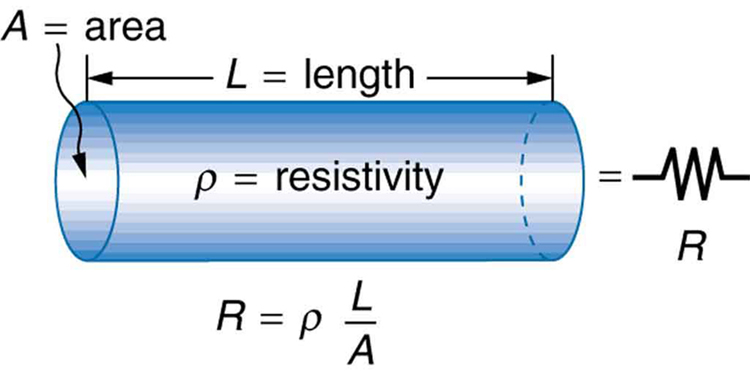\[\rho\]
.The resisitivity of a material is the resistance between opposite faces of a im cube made of the material, so that the cube is 1m by 1m by 1m. We do not need to such a cube to find the resistivity of a material. The resistance between the ends of a block of material of length L, constant cross sectional area A is inversely proportional to that area, and proportional to the length of the block. In effect we can 'resize' any block of constant cross sectional area up to a 1m by 1m by 1m cube. The resistance between the ends of the block will then be
\[R=\frac{\rho l}{A}\]
.
